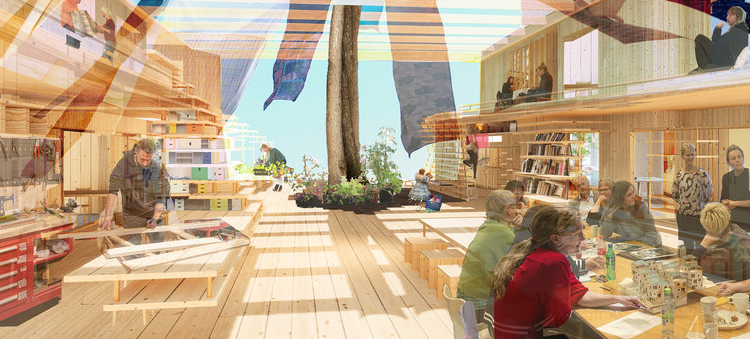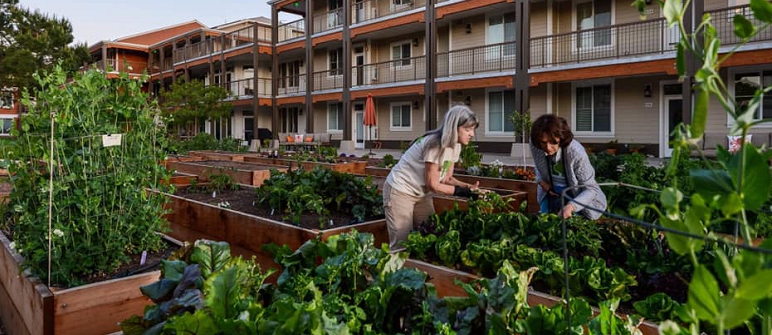Communal living and co-housing arrangements are becoming increasingly popular as more and more people seek to create a sense of community and reduce their carbon footprint. In these living arrangements, individuals live together in a shared space, sharing resources and responsibilities. While there are many benefits to this lifestyle, there are also challenges that come with it.
What Are Communal Living and Co-housing?
Communal living and co-housing refer to living arrangements where multiple individuals live together in a shared space and share resources and responsibilities. In communal living, residents live in a community with shared spaces such as kitchens, bathrooms, and living rooms, and may also have private living quarters.
Co-housing is a form of communal living where residents have their own private living quarters but also share common spaces and participate in collective decision-making. Both communal living and co-housing are designed to promote a sense of community, sustainability, and cost savings, while also providing residents with a support network.
Communal living and co-housing are alternative living arrangements that have gained popularity in recent years. The main idea behind these arrangements is to bring people together in a shared living space, where they can benefit from increased social interaction, shared resources, and a sense of community.
In a communal living arrangement, residents share common spaces such as kitchens, bathrooms, and living rooms. They may also have private living quarters, such as bedrooms, but the emphasis is on shared spaces and community living. Co-housing is a specific type of communal living where residents have their own private living quarters but also share common spaces and participate in collective decision-making.
Benefits of Communal Living and Co-housing
Communal living and co-housing offer several benefits, including increased social interaction, cost savings through shared resources, a greater sense of community, increased sustainability, a built-in support network, flexibility in living arrangements, and exposure to diverse perspectives and cultures. These arrangements foster a sense of community, provide residents with a support network, and can reduce waste and cost of living. Communal living and co-housing offer several benefits.

- Increased Social Interaction: Living in a shared space with others provides opportunities for increased social interaction and a sense of community.
- Shared Resources and Cost Savings: Sharing resources such as kitchens, laundry facilities, and common areas can reduce the cost of living for each individual.
- Increased Sense of Community: Living in a communal setting fosters a strong sense of community, where residents look out for each other and support one another.
- Greater Sustainability: By sharing resources and living spaces, communal living and co-housing can reduce waste and promote sustainability.
- Support Network: Living in a communal setting provides residents with a built-in support network, which can be especially beneficial in times of need.
- Flexibility: Communal living and co-housing arrangements can offer greater flexibility in terms of living arrangements, as residents can choose from a variety of options, such as private or shared living quarters.
- Diversity: Living in a communal setting can provide exposure to diverse perspectives, lifestyles, and cultures, which can broaden residents’ horizons and foster personal growth.
Challenges of Communal Living and Co-housing
The challenges of communal living and co-housing include balancing individual and collective needs, managing conflicts, maintaining common areas, privacy concerns, finding compatible community members, adapting to collective decision-making, and ensuring sustainability and shared responsibility. These challenges require clear communication, compromise, and a commitment from all residents to making the arrangement work. While communal living and co-housing offer many benefits, there are also several challenges to consider.

- Balancing Individual and Collective Needs: Living in a shared space with others requires balancing individual needs and desires with those of the group.
- Managing Conflicts: With multiple people living in close quarters, conflicts may arise and need to be effectively managed.
- Maintenance and Upkeep of Common Areas: Maintaining and cleaning shared spaces can be a challenge, especially if responsibilities are not clearly defined or shared evenly.
- Privacy Concerns: Living in close quarters with others can raise concerns about privacy, which can be difficult to manage.
- Finding Compatible Community Members: Finding individuals who are compatible and share similar values and lifestyle choices can be challenging, especially when seeking to form a co-housing community.
- Adapting to Collective Decision-Making: Living in a co-housing community requires residents to participate in collective decision-making, which can be challenging for those who are used to making decisions independently.
- Sustainability and Responsibility: Maintaining a sustainable lifestyle and sharing responsibilities can be difficult, especially if not all residents are committed to the same goals.
These challenges can test the resilience of the community and require clear communication, compromise, and a commitment to making the arrangement work.

Tips for Successful Communal Living and Co-housing
To ensure a successful communal living or co-housing arrangement, it is important to have clear communication and decision-making processes, regular community meetings, flexibility and open-mindedness, respect for individual differences, a fair distribution of responsibilities, established ground rules, and encouragement of community involvement. A successful arrangement requires a commitment to clear communication, respect, and shared responsibilities. To ensure a successful communal living or co-housing arrangement, it is important to consider the following tips:
- Clear Communication and Decision-Making Processes: Establishing clear communication and decision-making processes can help prevent conflicts and ensure that all residents are on the same page.
- Regular Community Meetings: Regular community meetings can provide an opportunity for residents to discuss any issues or concerns and make collective decisions.
- Flexibility and Open-Mindedness: Living in a shared space requires flexibility and an open-minded approach to accommodate the needs and desires of others.
- Respect for Individual Differences: Recognizing and respecting individual differences is key to creating a harmonious living environment.
- Fair Distribution of Responsibilities: Sharing responsibilities fairly can help prevent resentment and ensure that common areas are well-maintained.
- Establishing Ground Rules: Establishing ground rules, such as quiet hours or guidelines for shared spaces, can help ensure that everyone is comfortable and respected.
- Encouraging Community Involvement: Encouraging community involvement and encouraging residents to participate in shared activities can help foster a strong sense of community.
By following these tips, individuals can work together to create a successful and harmonious communal living or co-housing arrangement.

